Michel Bouko Levy, M.D. obtained his degree in Medicine from the University of Marseille, France, in 1974, and diploma of Pediatrician the following year. He received his National Diplomas of Homeopathic Physician from the Centre Homéopathique de France, l’Ecole d’Homéopathie de l’Hopital Saint Jacques and l’Institut National Homéopathique Français in 1984. Doctor Bouko Levy developed an entirely new systemic approach to biotherapeutic drainage in homeopathy. His books include “Everyday Homeopathy” and his Complete Homeopathy and Drainage Repertory.
AS: Welcome to Hpathy Dr. Bouko Levy. We’re honored to have you share your ideas with our worldwide audience of homeopaths and students.
You’ve taught homeopathy throughout the world and are held in the highest esteem. Since you first studied homeopathy, you have developed your own special insights and methods in practicing homeopathy. Could you share with us the evolution of your thinking since 1984, that led to your important discoveries?
MBL : As a medical doctor, practicing homeopathy started with a deep sense of responsibility that I had to do everything that could be done to heal my patients. In order to reach that goal, I needed to understand something I had not learnt during my medical studies, and that I later identified as the logic of the patient as well as the logic of the disease. Frank Herbert said: The beginning of knowledge is the discovery of something we do not understand.”
In 1977, I opened my first medical office in Peynier, a little village of Provence, in the South of France. At that time, I was practicing conventional medicine. One of my first patients was a woman who consulted me for sinusitis. I gave her the appropriate prescription, but she was back a week later with digestive disorders caused by side effects of antibiotics. She then developed vaginitis and cystitis. Disease was challenging me. I needed to understand why this sequence of events happened, and how to address it.
Upon deep reflection, I concluded that this patient was trying to eliminate toxins through different organs, ENT and lung, stomach and colon, genital and urinary. It only made sense to me and I felt had to try to facilitate the process. Looking back, it was my first attempt at implementing drainage in my practice.
I researched a way to learn a medicine that would help me treat the patient as a whole and facilitate the elimination of toxins. I bought my first book on homeopathy: Doctor Jouanny Materia Medica, quickly followed by the Organon.
Next, came an eighteen year old boy with a lot of warts on both hands. His mother consulted me in an attempt to avoid the laser treatment offered by her dermatologist. I prescribed Thuya 9 CH, 5 granules twice a day, according to Dr. Jouanny’s reference. A month later, the warts were gone! Immediately, I started to prescribe whatever homeopathic remedy I could, and decided to take a three-year course at the French School of Homeoapthy (Ecole Française d’Homéopathie).” I received my diploma of Homeopathic Physician in 1981.
During my studies in that school, I learnt there were at least two methods of practicing homeopathy: unicism – treating the patient with one single remedy at a time, and pluralism – treating the patient with several remedies together. Neither of them satisfied me. A patient is like a complex puzzle, treatment requires precise choices. Finding the perfect single remedy every time was nearly impossible, and giving several remedies with the hope that one will work didn’t seem right.
I investigated, different currents of homeopathic thinking. I became very fond of morphotypology (Dr.Vannier), interested by some remarks of anthroposophy, and consulted with specialists in iridology, acupuncture, auriculotherapy, and osteopathy, to expand my knowledge and help deepen my understanding.
I questioned the reasoning behind these methodologies and found them incomplete by themselves. I felt that a global strategy was necessary, because homeopathic medicine in my eyes encompasses remedies and strategies based on the totality of the patient, the logic of his/her system, his environment and universal factors that had to be taken into consideration. Therefore, I kept searching and learning.
A systemic perspective enables the understanding of the complex whole, in the totality of its organization and the interactions between the subunits. A systemic perspective reasons in term of dynamics around a flux of subunits, as does biology, from organ to organ, from function to function.
Thus, the inside of the body may be analyzed as though it is outside; the ATP energy system of the mitochondria may be analyzed in the same way as the solar system. The flux is composed of matter, energy, and information. As we advance into the infinitesimal, the flux of matter decreases. Beyond Avogadro’s number, the flux only contains energy and information.
Feedback loops maintain the stability and dynamics of the system, like a thermostat; they amplify and control the system. Each defines a zone of equilibrium. This dynamic equilibrium between subunits is set up either around a fixed point (as glycemia), or around a changing value (anabolism and catabolism), with a variable response time depending on the subunits. The acute disease is a subunit of the chronic disease.
A patient’s organ requires support with each step of elimination. Clinical experience confirms that the body uses drainage implements. It is indispensable to include both organ and function remedies during the treatment of a patient.
The wheel of emunctories (organs of elimination) naturally maintains the body’s cleaning and fortifying abilities. Two courses of emunctories treat and eliminate the stream of toxins along this wheel. The first course goes from the skin to the digestive system and then to the respiratory system. The second course evolves from the urinary system, then goes to the osteoarticular system and finally to the cardiovascular system. All of the emunctories are governed by the endocrine and nervous system and must be considered at each stage of treatment.
Our individual wheel of emunctories turns according to our own Constitution, Reactive Mode, and Line of Life. In the evolution of a chronic disease, the order in which the different organs are affected shows the exact treatment strategy to follow and the type of drainage the patient needs. Nature clearly demonstrates the existence and function of the emunctories, and the necessity of drainage. Drainage is scientifically based on anatomy, physiopathology, and biochemistry; it’s Systemic. The key to successful treatment is good detoxification. Drainage regulates the activity of the blocked or deficient organs and improves the quality of the essential emunctories. This is the first condition necessary for a quick and complete healing. (Note: Doctor Stinghe said to give the vegetal in the morning and the mineral in the evening.)
AS: Can you talk about Individual Logic and the “Line of Life?
MBL: The Reactive Modes follow a natural evolution of the patient’s life; they are the dynamic elements of the organism and they govern the impulses of the natural cycles from growth to maturity. With the Line of Life, the practitioner can locate the acute disease and build a strategy to heal patients suffering from chronic diseases. In order to correctly analyse his patient’s case, the practitioner must be able to perfectly draw their individual Line of Life. Its course shows the evolution of the Reactive Modes and the logic in the appearance of the different diseases that occurred during their life.
The first cycle corresponds to intra-uterine life. From birth, all individuals will evolve through 7 cycles. From 0 to 7: builds itself. From 7 to 14: discovers itself. From 14 to 21: looks at itself. From 21 to the onset of the menopausal or andropause period, the period of menopause or andropause, and finally old age.
The individual line of life indicates the dominant reactive modes of the patient and shows the correct order to follow with the homeopathic therapy. The treatment strategy of chronic diseases lies in the precise analysis of the two first cycles, which point out the dominant general modalities of the patient.
AS: Could you say something about Doctor Kollistch’s perspective?
MBL: The idea of classification of the mineral homeopathic drugs according to the atomic weight and the number of valences comes from Dr Paul Kollitsch. He referred to Mendeleev: “The relations between the properties of the elements and the atomic weights”. From this work arose the periodical classification of the elements and the classification of homeopathic drugs of Paul Kollitsch.
At particular intervals, we find groups of bodies, with groups under, with similar properties. The action of the alkaline metals is a hydration action acting on protoplasm. Heavy metals have practically no oxydating nor hydratating action so they will act on the tissues where the chemical reactions are practically non-existent. The aggravation of the symptoms is related to the increasing of the atomic weight. The action of simple bodies is deeper and slower than that of vegetal and animals, in chronic and acute.
Doctor Kollishtch, according to Mendeleev’s periodical classification of chemical elements, gathers the common properties of each homeopathic mineral, making chemical families and their satellite relations.
During the second part of the 20th century, chemical aspects of Homeopathics were widely studied. Doctor Hodiamont published on chemical properties and relations of homeopathic substances, vegetal, mineral, and animal.
Doctor Schüssler introduced mineral salts which enter in the composition of blood and tissues and which are necessary to their constitution and good functioning. One cell is a complete organism itself which lives, breathes, expires, ingests, digests, excretes, increases volume, multiplies. The biochemical composition of the cell consists of two kinds of substances which are combined, organic and mineral.
Mineral salts whose action, in determined amounts, is necessary to the constitution and the good functioning of tissues, have to be used in the treatment of chronic diseases. They are essential for Tuberculinic, infant, child, growth periods, and in case of weakening by long lasting diseases or ageing. Doctor Schüssler wrote: “no bone without calcium, no blood without iron, no cartilage without silica, no saliva without potassium chloride”
According to some astrology authors, Schussler Salts would correspond to planets; each planet sign has predispositions and affinities with a mineral. Although this concept is very valuable, I do believe that Schussler Salts are universal and cannot be limited to any kind of human classification.
AS: What are some other important signs to read from the patient’s body?
MBL: Since listening to a patient’s cough is a diagnostic exercise more effective than all the best Materia Medica descriptions, I decided to make an acoustic dictionary of cough. The project was quickly abandoned because of technical problems. Meanwhile, I had met Doctor Zvi who diagnosed conditions by observing his patients’ nails. He was a seasoned practitioner and had great experience with homeopathy and the use of minerals.
I dedicated a room of my office to the photography of patient’s nails and undertook a three-year study on nails, and how their condition relates to specific diseases and calls for specific remedies. In 1988, the results of my study were published by the British Homeopathic Journal. It was presented for the first time to practitioners in North America in Montreal, PQ, and Vancouver, BC (Canada) in 1989.
I kept experimenting. My countryside practice demanded for me to give fast-acting and simple treatments – and develop a great sense of humor! From the early eighties to 1990, I went around with a briefcase full of injectables, both allopathic and homeopathic. This gave me an opportunity to perform a full study on the efficacy of homeopathic injectables, mainly on acute disease (trauma, osteo-articular, infection) but also on some chronic disease (arthritis, rheumatism).
I noticed that homeopathic injectables work very well and very fast, especially in the following cases: lumbar pain and torticolis, otitis, abcess, bronchitis and chronic rheumatisms, especially of the spine. The results of this study were published in 1983 in a Review by the Institute of Homeopathy of Provence, and Cahiers of Biotherapie, and in 1990 in the Images magazine. Unfortunately I had to give up on the study then due to regulations that forced homeopathic injectables off the market.
I am a perpetual student humbled by the amount of knowledge in the world, grateful for these great minds who shared their findings without restrictions. They are the reason why I could develop a medical approach that fit my needs to do right by my patients. They have taught me everything I know about medicine and the healing arts, and made me as eager to share as I am to learn.
AS: Could you give a synopsis of one of your cases to illustrate your approach?
MBL: The patient: a fourteen year old boy with severe hepatitis and jaundice – pallid, no appetite at all, intense thirst, prostrated, drowsy, nauseated, discolored stools.
I ordered blood tests immediately. In the mean time, I prescribed one single dose of Phosphorus 15CH. The mother calls me, frightened: the patient opens the fridge and eats everything in sight!
The blood test shows very high transaminases rates. My second prescription will address the patient’s age factor, Constitution, Reactive Modes, the disease, and individual Line of Life.
Age: the child needs intense and prolonged mineral support, starting with Sulfur Iodatum 9 CH + Calcarea Phosphorica Schüssler Salt and 15 CH. His demineralization also calls for Natrum Muriaticum, Silicea, and their companion remedies such as Ignatia.
Disease: The Tuberculinic centripetal process reveals a severe ineffectiveness of some emunctories that need immediate support. I prescribe China 5 CH and Chelidonium 5 CH, then Kalium Phosphoricum, Magnesia Phosphorica and Natrum Phosphoricum.
Evolution: Sycosis is to be the following stage of his life. Therefore, as his doctor, I have to be vigilant and follow up carefully.
AS: There are interesting concepts here that need some more explanation. If I understand you correctly, you do a timeline of the patient’s history of illnesses, and that helps you select the proper drainage remedies. Do you start with the current layer and work backwards, as in classical homeopathy? What other factors determine the remedy?
MBL: The Laws of Hering are one of the major elements to consider in a medical story, for anamnesis as well as for treatment strategies. Hahnemann, in Chronic Diseases, develops the concept of miasm. Reactive modes are Miasms, and much more when considered in 21th century science. Analogy can be applied to different levels: symptoms, physiopathology, bacteria, toxin, organic, always biochemistry, and societal parameters.
The scientific method is observation and individualization of the clinical case, and the personal Constitution and Reactive Modes. It enriches the experimentation. We must admit that we’ll never know fully how a human functions, and accept that a patient is made of varied layers, of which we only have detected very few.
AS: How do you determine which layer to start with?
MBL: Which layer to choose? “Any treatment of chronic disease is useless if we do not calm the excess of sensitiveness and irritability which put an obstacle to the good action of Psoric remedies.” Hahnemann. Therefore, in my practice, the layer to start with is dictated by clinical observation of the symptoms of the patient, the patient’s place on his/her line of life, and his/her reactive mode.
AS: You have said that the “treatment strategy of chronic diseases lies in the precise analysis of the two first cycles, which point out the dominant general modalities of the patient.” Could you explain what the first two cycles are ?
MBL: The first cycle is the intra-uterine life that encodes hereditary information about the immune functions. The second cycle is the first seven years with a natural evolution of the Constitutions and the Reactive Modes.
The infant is a Psoric, the depth of its hereditary Psora can be precisely evaluated from these first moments. When the child starts walking and talking, they express their Luetic Reactive Mode, when the child discovers cleanliness, their Sycotic Reactive Mode, and during growth accelerations, they are Tuberculinic.
AS: I see, so the stages are predictable and you can tell what to look for. When applying drainage remedies, does one have to be concerned about aggravations as toxins are leaving the body?
MBL: Toxins have to be evaluated before starting the treatment. The correct homeopathic drainage is performed according to Hahnemann principles, and takes into consideration the significant power and diversity of the Psoric eliminations. Remember that drainage is necessary to help the organs during the healing process. It helps the elimination process, therefore it alleviates symptoms that might be caused by leading remedies given without the support of drainage. When applied properly, drainage prevents symptoms that could be evoked as aggravation otherwise. So, no, drainage doesn’t evoke aggravations. It prevents them.
AS: If our readers wanted to learn how to use your approach, are there books, or other resources? Is your repertory still available?
MBL : We are preparing new publications to help practitioners understand and apply Homeopathic Drainage to their daily practice. First of all, we are digitizing my course. The course was taped live in Toronto, during my 10-session, 3-day seminar series. This is a complete course that gives practitioners an in-depth understanding of drainage and homeopathy. Session 1 is already available. Second, we are preparing the publication my books. First will come “Homeopathic Drainage.” This book is designed to be a quick reference guide for practitioners in their daily practice. It will include the basic principles of Drainage and Homeopathy, Gemmotherapy and Organotherapy, the Materia Medica of major remedies written by me, a lot of tables and illustrations, and a therapeutic index, so anyone can find what they need at a glance. To my knowledge, it will be a one of a kind book.
Third will come 2 other books: I will publish the result of my study on “Diagnosis Through Observation of Nail Condition.” This book will be another “one of a kind” reference book. It will be followed by the second edition of “Homeopathic and Drainage Repertory,” which is probably one of the most sought after books in the field of Drainage. The first book, “Homeopathic Drainage,” should be published at the end of June or in July. We will let you know of the publication schedule as we progress. http://www.homeopathicdrainage.com/
AS: Thank you for sharing with us today. Your work opens up a whole new approach in practicing.
Editors Note: Dr. Levy has an audio course available at his website, which also has more information about his approach and his blog articles.
http://www.homeopathicdrainage.com/
BIO
Michel Bouko Levy, M.D., obtained his degree in Medicine from the University of Marseille, France, in 1974, and obtained his diploma of Pediatrician the following year. In 1976, he moved to Canada, where he was in charge of the department of Pediatrics of the Hospital of Moncton. He received his National Diplomas of Homeopathic Physician from the Centre Homéopathique de France, l’Ecole d’Homéopathie de l’Hopital Saint Jacques and l’Institut National Homéopathique Français in 1984. Doctor Bouko Levy incorporated homeopathy and biotherapeutic drainage into his medical practice successfully, and developed a new understanding and method of application of homeopathic biotherapeutics that he shared generously with doctors in Europe, North America and North Africa. He taught a complete course on Homeopathy and Biotherapeutic Drainage in Toronto, Canada, for the Homeopathic Medicine Association of Canada in 1995, an in Chicago, Fort Lauderdale, Fl and Scottsdale, AZ in 1997. He published his first book, “Everyday Homeopathy” in 1989, and a complete homeopathy and drainage repertory” in 1993.

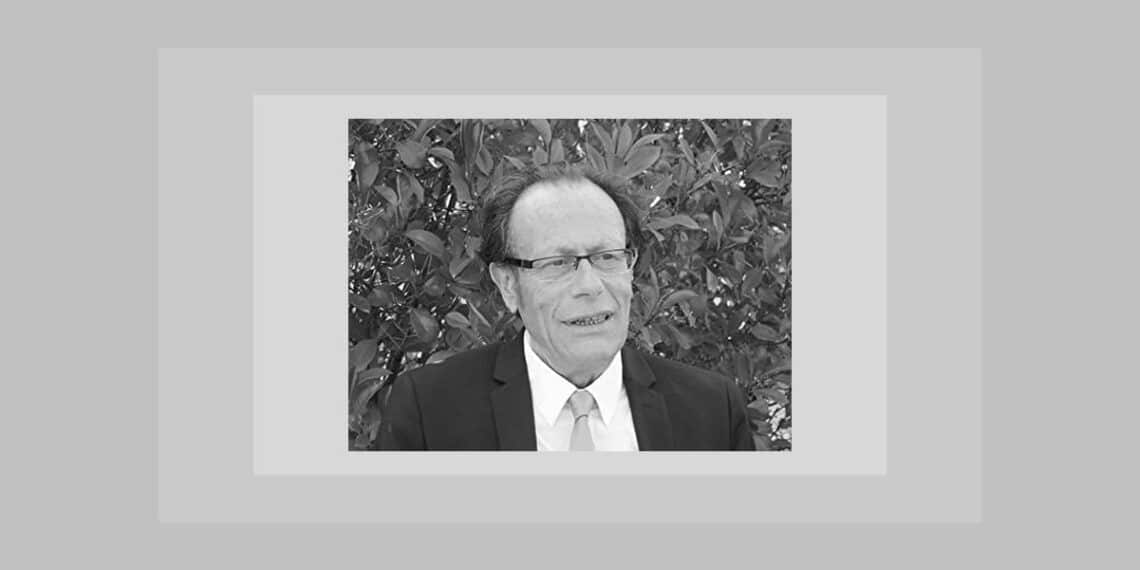
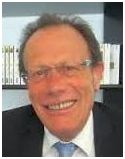
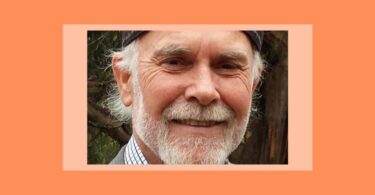
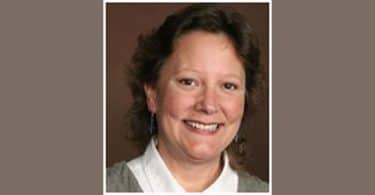
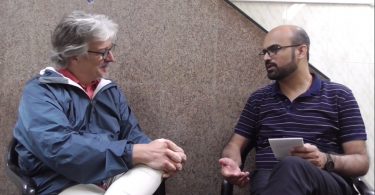

A wonderful interview. Dr. Bouko Levy is one of those rare individuals who do pioneering work that benefits the entire community. He clearly has a vision of how all the aspects of health fit together.